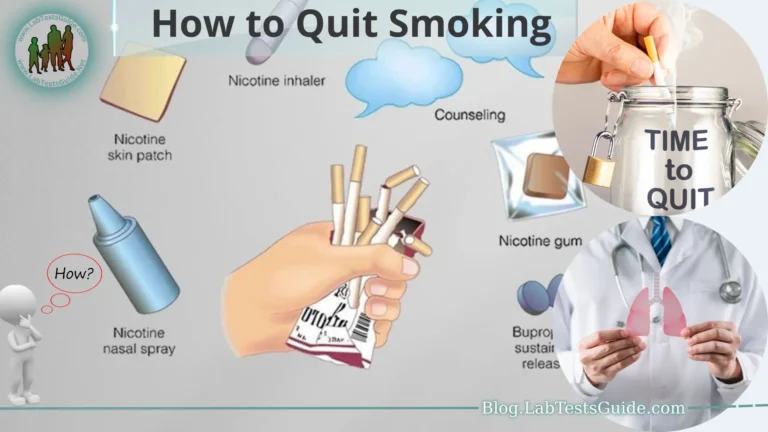Sleep disorders can significantly impact the quality of life and overall well-being of individuals, including girls. Adequate sleep is essential for physical health, cognitive function, emotional well-being, and overall development, particularly during adolescence. However, various factors can contribute to sleep disturbances in girls, ranging from hormonal changes to lifestyle habits and underlying medical conditions.

This guide aims to provide valuable information and practical strategies for managing sleep disorders as a girl. It will explore common sleep disorders that girls may experience, such as insomnia, sleep apnea, restless legs syndrome (RLS), and narcolepsy. By recognizing the signs and symptoms of these sleep disorders, girls can seek appropriate professional help and make necessary lifestyle changes to improve their sleep quality.
The guide will discuss the importance of seeking professional help and undergoing sleep studies for an accurate diagnosis. It will also delve into lifestyle modifications, including establishing a regular sleep schedule, creating a sleep-friendly environment, practicing relaxation techniques, managing stress and anxiety, and engaging in regular physical activity.
Sleep hygiene practices, such as limiting caffeine and electronic device usage before bed, establishing a bedtime routine, and maintaining a comfortable sleep environment, will be emphasized. Additionally, the guide will provide insights into dietary considerations, including a balanced diet, foods that promote sleep, and foods to avoid before bedtime.
Furthermore, coping strategies and sleep aids, such as cognitive-behavioral therapy for insomnia (CBT-I), relaxation techniques, over-the-counter sleep aids, prescription medications, and alternative therapies, will be explored to help girls effectively manage their sleep disorders.
Lastly, the guide will touch upon the relationship between sleep disorders and menstruation, addressing the impact of hormonal changes on sleep patterns and discussing strategies to manage premenstrual insomnia.
By empowering girls with knowledge and practical solutions, this guide aims to support them in achieving better sleep and improving their overall well-being. It is important to note that while the information provided here can be helpful, it is always advisable to consult with healthcare professionals for personalized guidance and treatment options.
Understanding Sleep Disorders:
Here are some common sleep disorders.
Common Sleep Disorders:
- Insomnia: Insomnia is characterized by difficulty falling asleep, staying asleep, or experiencing non-restorative sleep. It can be acute (short-term) or chronic (long-term) and may result from various factors, including stress, anxiety, depression, medication, or underlying health conditions.
- Sleep Apnea: Sleep apnea is a disorder in which breathing repeatedly stops and starts during sleep. It occurs when the throat muscles intermittently relax and block the airway, leading to loud snoring, gasping, and interrupted sleep. Obstructive sleep apnea (OSA) is the most common type and can impact girls as well.
- Restless Legs Syndrome (RLS): RLS is characterized by uncomfortable sensations in the legs, usually accompanied by an irresistible urge to move them. These sensations typically worsen during periods of rest or inactivity, leading to difficulty falling asleep or maintaining sleep.
- Narcolepsy: Narcolepsy is a neurological disorder that affects the brain’s ability to regulate sleep-wake cycles. It is characterized by excessive daytime sleepiness, sudden episodes of muscle weakness (cataplexy), sleep paralysis, and vivid hallucinations.
Sleep Disorders in Girls:
- While sleep disorders can affect individuals of all genders, certain sleep issues may be more prevalent or unique to girls. For example, hormonal changes during adolescence and menstruation can impact sleep patterns and lead to conditions such as premenstrual insomnia. Additionally, certain sleep disorders, like restless legs syndrome (RLS), may have a higher incidence among females.
It is important for girls to be aware of these sleep disorders, their potential causes, and associated symptoms. By recognizing the signs, girls can take proactive steps to seek professional help, implement lifestyle changes, and explore treatment options to improve their sleep quality and overall well-being.
Recognizing Signs and Symptoms:
Here are some common sleep disorders and their associated signs and symptoms.
Insomnia:
- Difficulty falling asleep at night
- Trouble staying asleep, waking up frequently during the night
- Waking up too early in the morning
- Feeling tired, fatigued, or not refreshed upon waking
- Daytime sleepiness or drowsiness
- Irritability, mood disturbances, or difficulty concentrating due to lack of sleep
Sleep Apnea:
- Loud and chronic snoring
- Episodes of breathing cessation during sleep, often witnessed by a partner or family member
- Gasping or choking sensations during sleep
- Excessive daytime sleepiness or fatigue
- Morning headaches
- Poor concentration or memory problems
Restless Legs Syndrome (RLS):
- Uncomfortable sensations in the legs, such as crawling, creeping, tingling, or aching
- Irresistible urge to move the legs, often relieved by movement
- Worsening of symptoms during periods of rest or inactivity, especially in the evening or at night
- Difficulty falling asleep or staying asleep due to leg discomfort
Narcolepsy:
- Excessive daytime sleepiness, often resulting in unintentional napping or falling asleep during activities
- Sudden episodes of muscle weakness (cataplexy), often triggered by strong emotions
- Sleep paralysis, temporarily unable to move or speak while falling asleep or waking up
- Vivid hallucinations while falling asleep or waking up
It is important to note that these signs and symptoms can vary among individuals, and the presence of one or more does not necessarily indicate a specific sleep disorder. Consulting a healthcare professional is crucial for an accurate diagnosis and appropriate treatment. If girls or their caregivers notice persistent sleep disturbances and related symptoms, it is recommended to seek medical guidance for further evaluation and management.
Seeking Professional Help:
Here are steps to take when seeking assistance.
Consulting a Healthcare Provider:
- Start by scheduling an appointment with a healthcare provider who specializes in sleep medicine or has experience in diagnosing and treating sleep disorders. This may be a primary care physician, pediatrician, sleep specialist, or a sleep medicine clinic.
- During the appointment, provide a detailed description of the sleep disturbances, including the frequency, duration, and specific symptoms experienced. Be prepared to discuss any underlying health conditions, medications, and lifestyle factors that may be contributing to the sleep issues.
Sleep Studies and Diagnosis:
- Based on the evaluation, the healthcare provider may recommend further diagnostic tests, such as sleep studies, to assess sleep patterns, brain activity, breathing, and other factors. These tests can be conducted at sleep centers or sometimes even at home using portable devices.
- Sleep studies, such as polysomnography (PSG) and multiple sleep latency test (MSLT), help in diagnosing sleep disorders like sleep apnea, insomnia, narcolepsy, and restless legs syndrome. They provide valuable information to determine the appropriate treatment approach.
- The healthcare provider will interpret the results of the sleep study and discuss the diagnosis with you. This will guide the development of a personalized treatment plan to address the specific sleep disorder.
Remember that each sleep disorder requires different approaches for management, and treatment plans may involve a combination of lifestyle changes, therapies, medications, or other interventions. Follow the healthcare provider’s recommendations closely and communicate any concerns or difficulties faced during the treatment process.
It is essential to consult healthcare professionals rather than self-diagnose or rely solely on online resources for accurate assessment and management of sleep disorders. They have the expertise to provide personalized guidance and appropriate interventions to improve sleep quality and overall well-being.
Lifestyle Changes for Better Sleep:
Here are some key strategies to consider.
Establishing a Regular Sleep Schedule:
- Set a consistent sleep schedule by going to bed and waking up at the same time every day, even on weekends.
- Allow for an adequate amount of sleep based on individual needs, aiming for 7-9 hours of quality sleep each night.
- Create a relaxing bedtime routine that signals to the body that it is time to wind down and prepare for sleep. This may include activities such as reading, taking a warm bath, or practicing relaxation techniques.
Creating a Sleep-Friendly Environment:
- Design a comfortable and conducive sleep environment. Ensure the bedroom is cool, dark, and quiet.
- Invest in a supportive mattress, comfortable pillows, and breathable bedding materials.
- Minimize noise disturbances by using earplugs, a white noise machine, or a fan to create a soothing background sound.
Practicing Relaxation Techniques:
- Engage in relaxation techniques before bedtime, such as deep breathing exercises, progressive muscle relaxation, or guided imagery.
- Explore mindfulness or meditation practices to calm the mind and promote relaxation.
- Avoid stimulating activities, stressful discussions, or exposure to bright screens close to bedtime.
- Managing Stress and Anxiety:
- Develop healthy stress management techniques, such as engaging in regular physical activity, journaling, or talking to a trusted friend or counselor about worries or concerns.
- Practice stress reduction techniques, such as yoga, meditation, or mindfulness exercises, throughout the day to promote relaxation and better sleep.
Regular Exercise and Physical Activity:
- Engage in regular physical activity, such as aerobic exercises or sports, during the day. Regular exercise can promote better sleep quality.
- However, avoid vigorous exercise close to bedtime, as it can increase alertness and make it harder to fall asleep.
By implementing these lifestyle changes, girls can create a sleep-friendly routine and environment, reduce stress and anxiety, and improve their overall sleep quality. It is important to be consistent with these changes and give the body time to adjust to the new habits. If sleep problems persist or worsen, it is advisable to consult with a healthcare professional for further guidance and support.
Sleep Hygiene Practices:
Here are some sleep hygiene practices that can benefit girls with sleep disorders.
Limiting Caffeine and Stimulant Intake:
- Avoid consuming caffeine-containing beverages or foods, such as coffee, tea, energy drinks, and chocolate, close to bedtime. Caffeine is a stimulant that can interfere with falling asleep and staying asleep.
- Be mindful of hidden sources of caffeine, such as certain medications or sodas, and read labels to ensure you are not inadvertently consuming stimulants.
Avoiding Electronic Devices Before Bed:
- Minimize exposure to electronic devices, such as smartphones, tablets, and computers, in the hour leading up to bedtime. The blue light emitted by these devices can suppress the production of melatonin, a hormone that regulates sleep.
- Instead, engage in relaxing activities like reading a book, listening to calming music, or practicing relaxation exercises.
Creating a Bedtime Routine:
- Establish a soothing routine before bed to signal to the body that it is time to sleep. This may include activities like taking a warm bath, practicing gentle stretching, or listening to calming music.
- Avoid engaging in stimulating or mentally demanding tasks close to bedtime, as they can make it harder to unwind and fall asleep.
Maintaining a Comfortable Sleep Environment:
- Keep the bedroom cool, quiet, and dark. Use curtains or blinds to block out external light sources and consider using earplugs or a white noise machine to mask disruptive sounds.
- Ensure that your mattress, pillows, and bedding are comfortable and supportive. Replace them as needed to maintain optimal sleep conditions.
By incorporating these sleep hygiene practices into your daily routine, you can create an environment and mindset that promotes better sleep. Consistency and adherence to these practices can lead to improved sleep quality and overall well-being. Remember, it may take time for your body to adjust to these changes, so be patient and persistent in implementing them.
Dietary Considerations:
Here are some dietary considerations for managing sleep disorders.
Balanced Diet and Nutrition:
- Aim to follow a balanced diet that includes a variety of fruits, vegetables, whole grains, lean proteins, and healthy fats. A well-nourished body is more likely to support healthy sleep patterns.
- Avoid skipping meals or having heavy meals close to bedtime, as this can cause discomfort and interfere with sleep.
Foods That Promote Sleep:
- Incorporate sleep-promoting foods into your evening meals or snacks. These include foods rich in tryptophan, such as turkey, chicken, fish, nuts, seeds, tofu, and dairy products. Tryptophan is an amino acid precursor to serotonin and melatonin, which aid in sleep regulation.
- Additionally, foods high in magnesium, such as dark leafy greens, legumes, nuts, and seeds, can contribute to better sleep quality.
Foods to Avoid Before Bedtime:
- Limit or avoid consuming foods and beverages that can disrupt sleep. These include caffeine-containing products (coffee, tea, energy drinks), alcohol, spicy or heavy meals, and foods high in sugar or processed carbohydrates.
- Be cautious with fluid intake before bed to minimize the need for frequent bathroom trips that can disrupt sleep.
Hydration:
- Stay adequately hydrated throughout the day, but try to minimize fluid intake close to bedtime to avoid waking up frequently to use the bathroom.
- It is important to note that individual responses to food and beverages can vary. Pay attention to how different foods and drinks affect your sleep and make adjustments accordingly. If you suspect that certain foods or beverages may be negatively impacting your sleep, consider keeping a sleep and food diary to identify patterns and discuss them with a healthcare professional.
Maintaining a balanced diet, incorporating sleep-promoting foods, and being mindful of your eating habits can support healthy sleep and overall well-being. Remember that dietary considerations are just one aspect of managing sleep disorders, and it is important to address other lifestyle factors and seek appropriate medical guidance for comprehensive care.
Coping Strategies and Sleep Aids:
Here are some options to consider.
Cognitive-Behavioral Therapy for Insomnia (CBT-I):
- CBT-I is a highly effective therapeutic approach for treating insomnia. It focuses on identifying and modifying the thoughts, behaviors, and environmental factors that contribute to sleep difficulties.
- CBT-I techniques may include sleep restriction therapy, stimulus control therapy, relaxation training, and cognitive restructuring. It is typically delivered by a trained therapist and can be tailored to individual needs.
Relaxation Techniques:
- Practice relaxation techniques before bedtime, such as deep breathing exercises, progressive muscle relaxation, or guided imagery. These techniques can help reduce anxiety and promote a state of relaxation conducive to sleep.
Over-the-Counter Sleep Aids:
- Over-the-counter sleep aids, such as antihistamines or melatonin supplements, may be considered for short-term use to alleviate sleep difficulties. However, it is important to use them judiciously and consult with a healthcare professional to ensure their safety and appropriateness for your specific situation.
Prescription Medications:
- In certain cases, prescription medications may be prescribed to manage sleep disorders. Medications like benzodiazepines, non-benzodiazepine hypnotics, or antidepressants may be considered under the guidance of a healthcare professional. It is important to discuss potential risks and benefits, as well as any side effects or interactions with other medications.
Alternative Therapies:
- Some individuals find alternative therapies helpful in promoting relaxation and improving sleep, such as acupuncture, aromatherapy, or herbal supplements. While these approaches may have anecdotal support, scientific evidence is often limited, so it is important to discuss them with a healthcare professional before use.
When considering coping strategies or sleep aids, it is crucial to consult with a healthcare professional who can provide personalized guidance based on your specific sleep disorder and medical history. They can help determine the most appropriate approach and monitor your progress to ensure effective and safe management of sleep disorders.
Remember that coping strategies and sleep aids should be used as part of a comprehensive approach that includes lifestyle modifications and addressing underlying causes of sleep disturbances.
Sleep Disorders and Menstruation:
Here are some ways in which sleep disorders can be influenced by menstruation.
Premenstrual Syndrome (PMS) and Insomnia:
- Many girls and women experience premenstrual symptoms, including mood changes, irritability, and physical discomfort, which can disrupt sleep.
- Hormonal fluctuations, particularly changes in progesterone and estrogen levels, can contribute to insomnia symptoms such as difficulty falling asleep, frequent awakenings, and non-restorative sleep during the premenstrual phase.
Sleep Apnea and Hormonal Changes:
- Hormonal changes during the menstrual cycle, specifically fluctuations in progesterone levels, can affect the upper airway and increase the risk of sleep apnea episodes in some girls and women.
- Sleep apnea symptoms, such as loud snoring, gasping, and fragmented sleep, may be more pronounced during certain phases of the menstrual cycle.
Restless Legs Syndrome (RLS) and Iron Levels:
- RLS symptoms, such as uncomfortable leg sensations and an irresistible urge to move the legs, can be influenced by hormonal changes during the menstrual cycle.
- Iron deficiency or fluctuations in iron levels, which may occur during menstruation, can worsen RLS symptoms. Maintaining optimal iron levels through diet or supplementation may help alleviate RLS symptoms.
Insomnia and Menopause:
- As women approach menopause, hormonal fluctuations and changes in estrogen and progesterone levels can contribute to sleep disturbances, including insomnia.
- Hot flashes, night sweats, and mood changes associated with menopause can disrupt sleep patterns and lead to difficulties in falling asleep or staying asleep.
It is important for girls and women to be aware of these potential interactions between sleep disorders and menstruation. If sleep disturbances significantly impact quality of life or persist throughout the menstrual cycle, it is advisable to seek medical advice. Healthcare professionals can provide guidance on managing sleep disorders related to menstruation, recommend appropriate treatment options, or refer individuals to specialists in sleep medicine or gynecology if necessary.
Additionally, practicing good sleep hygiene, implementing stress management techniques, and maintaining a healthy lifestyle can help mitigate sleep disturbances associated with hormonal changes during menstruation.
Conclusion:
Managing sleep disorders as a girl requires understanding the various sleep disorders, recognizing their signs and symptoms, and seeking professional help for proper diagnosis and treatment. Lifestyle changes, such as establishing a regular sleep schedule, creating a sleep-friendly environment, and practicing relaxation techniques, can significantly improve sleep quality. Good sleep hygiene practices, including limiting caffeine and electronic device use before bed, are also crucial. Dietary considerations, such as following a balanced diet, avoiding certain foods before bedtime, and staying hydrated, can further support healthy sleep. Coping strategies, sleep aids, and addressing the impact of menstruation on sleep are additional aspects to consider in managing sleep disorders.
It is important to remember that each individual’s experience with sleep disorders may vary, and personalized guidance from healthcare professionals is essential. By combining these strategies and seeking appropriate medical support, girls can take proactive steps towards managing sleep disorders, improving sleep quality, and enhancing their overall well-being. Sleep is a vital aspect of physical and mental health, and prioritizing healthy sleep habits is crucial for girls to thrive.






